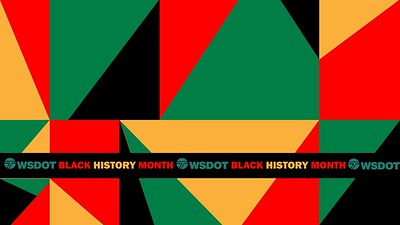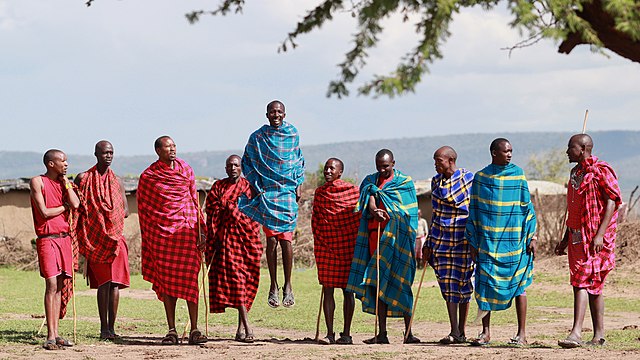Americans celebrate Black History Month in February, and in the United Kingdom, it’s celebrated in October. Nonetheless, both acknowledge the contributions of black people around the world. The event was first held in 1976 and is a chance to learn about black history. Aside from the figures you hear about, what do the four colors of Black History Month represent?
Buy the Pan-African flag on Amazon.
Become an insider. Subscribe to our newsletter for more top trending stories like this!
People Also Read: 4 Dramatic Events That Happened on October 20th
The Colors of Black History Month
There are four colors used during Black History Month: red, black, yellow, and green. These colors are on the flags of many African countries, including the pan-African flag. Each color is significant:
- Black represents the people of the nations.
- Red represents the blood that was shed in their struggles.
- Green represents African vegetation.
- Yellow represents equality and justice.
What Do the Four Colors of Black History Month Represent?
Red
Red on most African flags represents the blood shed during the fight for the country’s independence. A lot of liberation leaders put their lives on the line to secure a place for black people in history. Innocent civilians were also caught in these fights.
Many were forced out of their homes and treated inhumanely. Some were falsely detained and tortured, while others were captured and sent to foreign lands to work as laborers. Nonetheless, black people, through different movements, organized rallies and protests, which eventually led to their liberation.
Green
Black people owned some of the most fertile lands before colonialists threw them out and made them settlers. This led some to lose their land, and even after independence, some weren’t able to reclaim their portions.
Furthermore, the African continent is rich in natural resources. From wildlife, enchanting landscapes, minerals and water bodies, the scramble of Africa has always been centred around these riches.
Today, there’s a great push to have items collected from the continent and placed in museums in Europe or America returned to their countries of origin. It’s another push to decolonize and recognize the atrocities that happened across black communities.
Black
When Marcus Garvey decided to adopt the liberation flag, he noted that all other races at the time had a flag representing them. Black people have contributed to the growth of the Western countries. During the colonial era, they were exploited for labor.
Today, it’s only fair to acknowledge that and compensate them for the pains caused by the inhumane conditions they worked in. This is the reason why the narrative around giving reparations has gained traction. Also, black people are demanding an apology from these countries that enabled their suffering.
In contemporary times, groups like the Black Lives Matter movement in the United States are calling for the end of racial discrimination toward black people. They are also calling for proper representation and better treatment across all levels of society
Yellow
This is the hope that black people have that things will get better. The equality and the justice they are striving for will finally be delivered. Today, black people have a lot of milestones to celebrate.
African countries gained their independence, the United States had its first black president, and black people were increasingly included in the political, economic and social systems.
Origins of Plan African Flag
The Pan-African flag was designed by Jamaican activist Marcus Garvey. Garvey believed that black people should have a liberation flag. `
He was the first president of the Universal Negro Improvement Association (UNIA), and they adopted it in 1920 to secure a political home for black people.
Flags are a powerful gesture as they denote association and territory, meaning that black people had something to identify them. Many African flags are influenced by the pan-African flags and the history behind them.
Become an insider. Subscribe to our newsletter for more top trending stories like this!
Join our Spotcovery Global Black Community Facebook Group for early access to exclusive content and to share in a lively discussion.
Buy a basketball on Amazon.
Read also: 7 Interesting Atlanta Black History Facts to Know
Origins of Black History Month
Black History Month started as the Negro History Week in 1926. It was started by Carter G Woodson, who spent time studying Black Life and History.
He and his association, now known as the Association for the Study of African American Life and History, settled for February because former American President Abraham Lincoln’s birthday was in that month.
Lincoln signed the Emancipation Proclamation, which led to the end of slavery in the Confederate States in 1863. They also did it in honor of Frederick Douglass.
In the run-up to the expansion of Negro History Week to Black History Month, the popularity and significance of the event became evident. As of 1976, Black History Month was celebrated throughout February.
Black History Today
Today, the month is highly publicized and documented. People pay homage to all African Americans who fought for their liberation.
Additionally, activists, leaders, and many institutions use this month to reflect on their treatment of African Americans and create awareness about racial inequality.
People Also Read- Reasons for Polygamy in Africa: Why the Practice Still Persists
What do the four colors of Black History Month represent? We hope you now understand the significance of the colors behind the event. Additionally, you now understand the origins of the event and why it’s celebrated.
Buy “Slave Traders by Invitation: West Africa’s Slave Coast in the Precolonial Era” book by Finn Fuglestad at Amazon.
Nearly 80% of consumers visit directories with reviews to find a local business. List your business for free in our exclusive Spotcovery Black-Owned Business Directory.
Spotcovery offers unique and fresh daily content on Black culture, lifestyle, and experiences. We talk about everything black, black people, black-owned and black-owned businesses. We also deliver authentic and relevant content that will inform, inspire, and empower you! The future of black media is critical to today’s black experience! Our primary audience includes African Americans, Africans, Afro-Caribbean, and people of African heritage. Black culture is for the culture!
Become an insider. Subscribe to our newsletter for more top trending stories like this!





